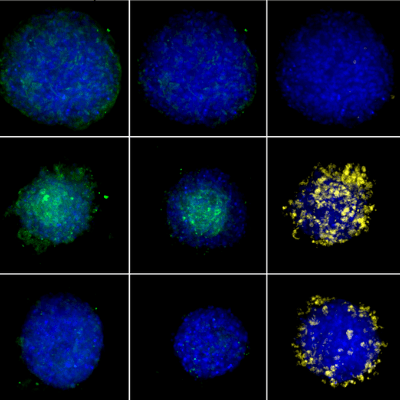 Traditionally, animal models have been used to study the effects of drugs in living organisms. However, there are differences in how humans versus animal models manifest liver disease, which is why in vitro models are increasingly being used in the development of therapeutics to prevent or treat fibrosis. In vitro models are cell culture models that are used to evaluate the effectiveness and safety of potential drug candidates. They are grown as monolayers and are routinely used to determine crucial decisions in the preclinical development of a drug candidate. The main difference between in vitro and in vivo models is that in vitro models are grown in a lab and do not involve living organisms, while in vivo models involve living organisms.
Traditionally, animal models have been used to study the effects of drugs in living organisms. However, there are differences in how humans versus animal models manifest liver disease, which is why in vitro models are increasingly being used in the development of therapeutics to prevent or treat fibrosis. In vitro models are cell culture models that are used to evaluate the effectiveness and safety of potential drug candidates. They are grown as monolayers and are routinely used to determine crucial decisions in the preclinical development of a drug candidate. The main difference between in vitro and in vivo models is that in vitro models are grown in a lab and do not involve living organisms, while in vivo models involve living organisms.
Visikol offers unique technologies and services for the study of inflammation and fibrosis, providing researchers and pharmaceutical companies with novel techniques to accelerate their research. Visikol’s Liver Fibrosis Assay uses 3D cell culture models that incorporate a mixture of hepatocytes or hepatocyte-like cells with nonparenchymal cells (NPCs) to provide the greatest utility. The assay analyzes gene expression via qPCR, allowing for many genes of interest to be evaluated using a single sample. Visikol has a quality control process in place for all new cell and
control compound lots to ensure standardization of their liver assays.
Visikol’s 3D Cell Culture Analysis
Visikol’s approach to 3D cell culture model analysis is unique in that it processes individual Z slices instead of extrapolating data from Z projections, which allows for the entire population of cells to be characterized. Additionally, Visikol offers true 3D analysis services wherein every cell within a 3D cell culture model can be characterized. They also provide comprehensive reports that distill the data to its essential components, giving actionable insights about the experiment.
One of the advantages of using in vitro models over traditional animal models is that in vitro models can be more cost-effective and less time-consuming. In vitro models can also be more easily standardized and controlled, which can lead to more reproducible results. Additionally, this model can be used to study specific cell types and pathways, which can be difficult to do in vivo.
Visikol’s Liver Fibrosis Assay Advantages
Visikol’s Liver Fibrosis Assay offers several advantages over traditional animal models. The assay provides a comprehensive suite of assays and services for the study of inflammatory pathways and the identification of promising targets for modulation and amelioration of inflammation and fibrosis. They also offer advanced in vitro models to assess promising drug candidates for hepatotoxicity, cardiotoxicity, and neurotoxicity. Additionally, research has shown that epithelial to mesenchymal transition (EMT) is implicated as the mechanism behind the increase in myofibroblasts as epithelial cells transition to deal with the tissue injury, and myofibroblasts are a potential therapeutic target.
The use of in vitro models like Visikol’s Liver Fibrosis Assay can help bridge the gap between in vitro assays and in vivo results, providing researchers with a more cost-effective, less time-consuming, and more easily standardized and controlled method of developing therapeutics for fibrosis. To learn more about Visikol’s Liver Fibrosis Assay, please reach out to a member of our team today!
